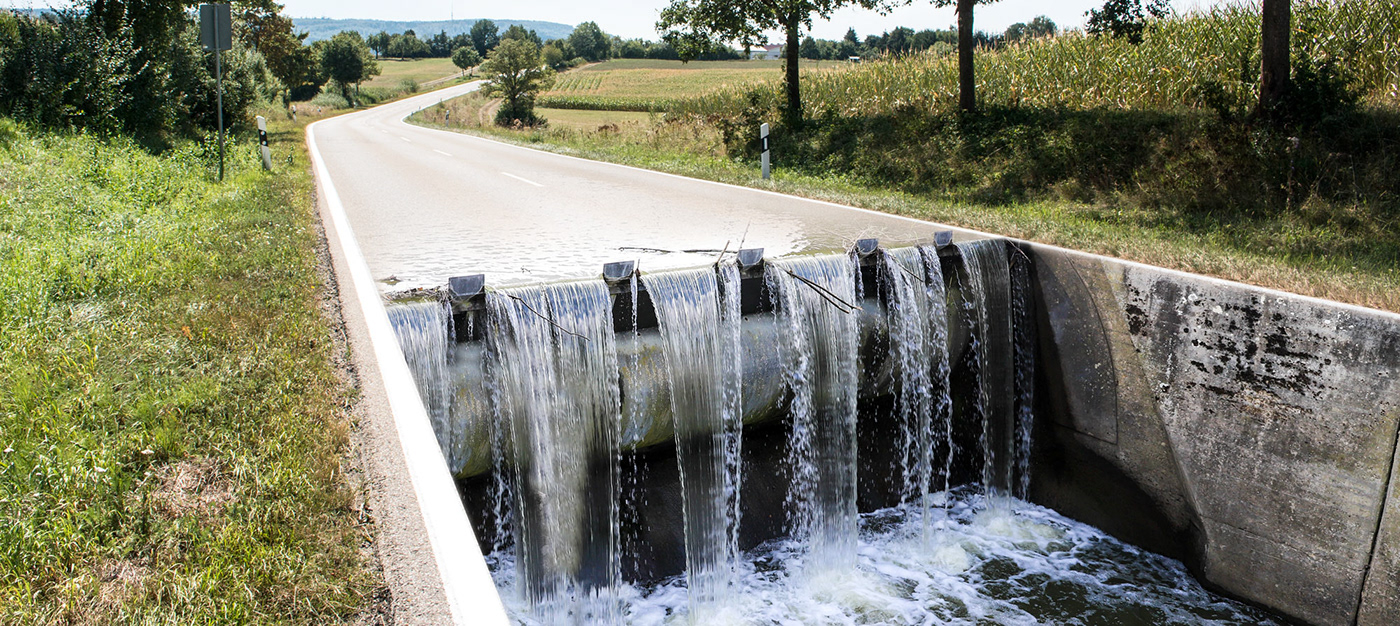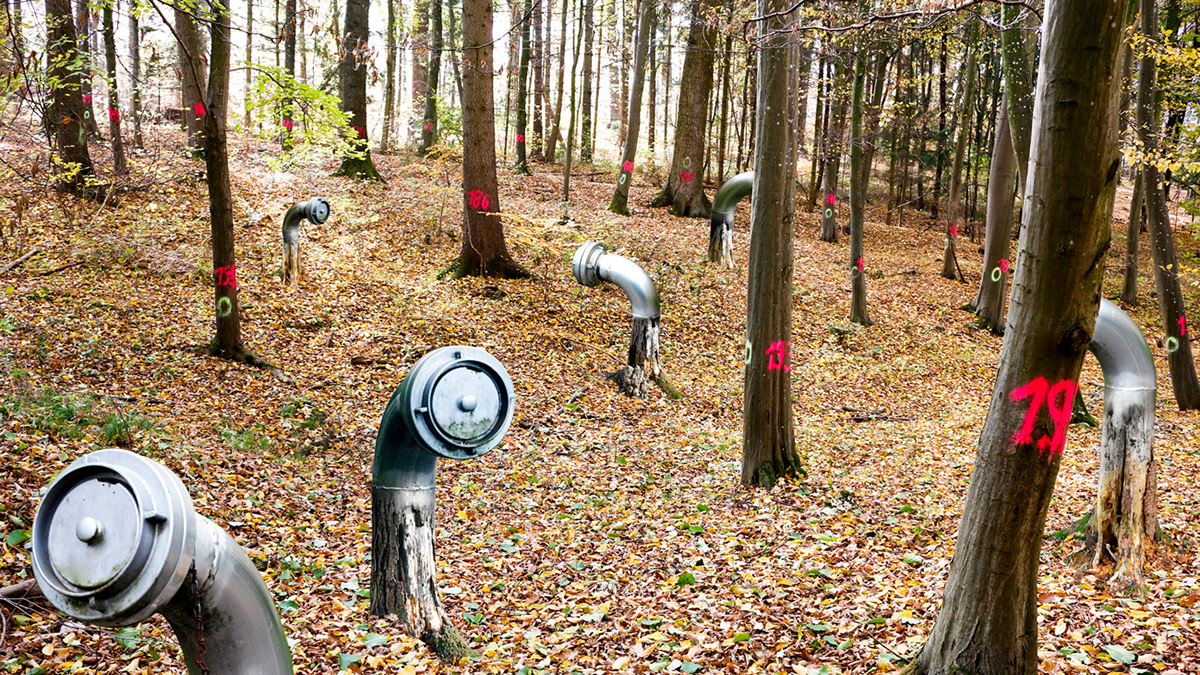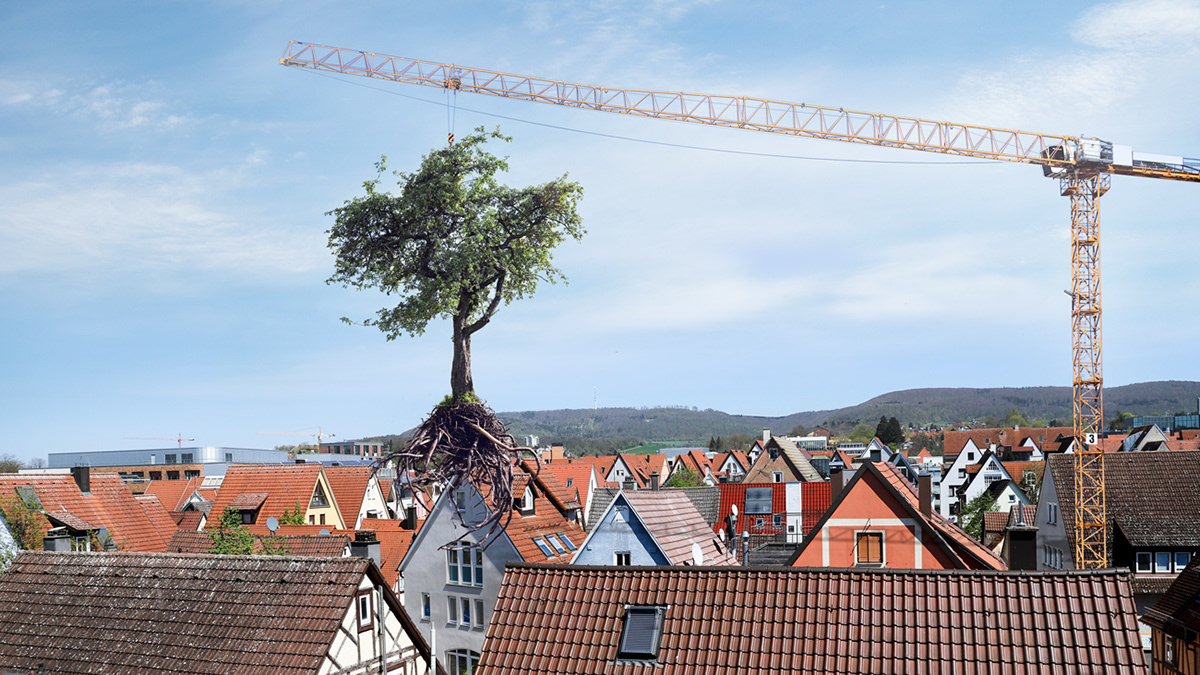ENVIRONMENTAL TRANSFORMATIONS

This project is about a surrealistic journey from the forest into the city with photographs from the Ostalbkreis in Germany to playfully, artistically and comprehensibly sharpen the awareness of ubiquitous environmental problems.
The idea for this project came from the experimental photographic practice during my master‘s program, my love of nature and the fascination for the surreal. After more than ten years abroad, in 2015, I returned to the small town I grew up in and was amazed by the negative changes in the environment. With this personal final project and in cooperation with the BUND - Regionalverband Ostwuerttemberg, we intend to playfully inform the people about the consequences of this progressive change.
The complete work includes a diverse selection of photographs that have been produced and subsequently digitally processed using a variety of photographic techniques and devices.
All in all, it contains a collection of nine contrasting photo series, each of which displays four images of the respective locations with four different photographic techniques, such as a special 360 ° technique, a Lensball photographic technique and photomontages. The last-mentioned technique was used for the main photographs, which were also exhibited to tell their own individual story and to illustrate the urbanization process as a whole.
The photomontages were selected as the main photographs because they illustrate the effects of environmental change in a playful yet distinctive way and are substantiated with the captions.

Our forests absorb environmentally harmful CO2 and produce the vital oxygen that they release to the atmosphere. This cycle is increasingly disturbed by human influences and sometimes already completely destroyed. Due to the rapidly progressing industrialization, enormous amounts of CO2 are generated, which the remaining forests can no longer absorb and process. The result is a global climate change that can cause devastating weather conditions.

Oceans, lakes and rivers ensure an even water balance in the ecosystems and can also bind CO2. In the last hundred years they have suffered greatly and many of these ecosystems have irreversibly collapsed. Acidification and rising water temperatures threaten animals and humans. This unnatural burden makes people and animals ill and can lead to self-poisoning and gene mutations.

Many plants depend on insects for their spread and reproduction and thus contribute to the preservation of ecosystems. For years the insect stock has been massively reduced and some species are even threatened with extinction. Excessive use of fertilizers and pesticides, introduced parasites and pathogens as well as the climate change create an uncertain future for insects. The devastating consequences are that the plants are no longer pollinated, birds and other species no longer have a nutrient base and ultimately humans suffer.

The transport infrastructure provides mobility that is crucial to world trade and one of the key factors in human abundance and progress. But even these often too fast developments have their dark side, especially with regard to the environment. Surface sealing, habitat fragmentation, and increased traffic, which causes a lot of noise and large amounts of exhaust fumes, are deadly to some species and plants in the long term. These factors favor climate change, because in concrete and asphalt deserts, nutrients and rainfall are no longer absorbed by the earth and continue to heat up due to high emissions.

In addition to clean air and high quality water, food meets our basic needs and is largely produced by the agriculture. Nevertheless, there are serious consequences for the massive overuse and exploitation of the environment. Continuous population growth requires the agriculture to maximize yields through monocultures, factory farming, excessive use of fertilizers and pesticides, and global deforestation. The extent of this development is already evident in the form of erosion, soil compaction and thus a poor soil fauna, more resistant pests and emerging diseases in humans and animals.

The economic situation, rising prosperity and greater space requirements have triggered a veritable construction boom. However, due to drastic price increases and lack of housing, this development not only has a negative impact on people, but also on the environment, which is struggling with the consequences. As a result of the associated surface pollution, huge areas of meadow disappear every day, tons of natural resources are wasted and enormous amounts of rubble are produced. The consequences are a deterioration of groundwater resources, the disappearance of plant and animal species, soil poisoning and the climate change.

Urban life is attractive because of its well-developed infrastructure, wide range of leisure and cultural activities and better employment opportunities. At a closer look, however, this development proves to be a serious challenge for humans and the environment. In overcrowded cities, there are often miles and miles of congestion, causing deafening noise and high CO2 emissions, adding to the burden on the few urban trees and plants. This leads to an extreme stress on humans and animals as well as widespread plant death, which in turn drives global warming.

The purchase and sale of goods is important to the economic performance of each country and determines the prosperity of the society. However, the serious disadvantages of this enormous consumer development in industrialized countries are often overlooked or obscured, and many animals, plants and people suffer from it. Often, the decaying packaging waste is left behind negligently, human rights are violated in developing countries and valuable raw materials are wasted in the production and processing. The extent of this development is the ever-growing mountains of garbage, through which animals die excruciatingly and famine, diseases, migrations and extreme weather conditions increase worldwide.

The technical progress, the automation and digitization of machines in the industry allow us a supposedly comfortable and carefree life and also promote our economy. However, this wealth comes at a price, as many environmental regulations in business, especially in developing countries, are often ignored or circumvented to produce cheaply. Every day, tons of industrial toxins are discharged into our waters, waste from technical and chemical processes aren‘t adequately filtered or cleaned, and the enormous emissions continue to affect our air quality. These emissions and toxins enter our drinking water and air and are absorbed by plants and animals that feed and poison us in the foreseeable future.



